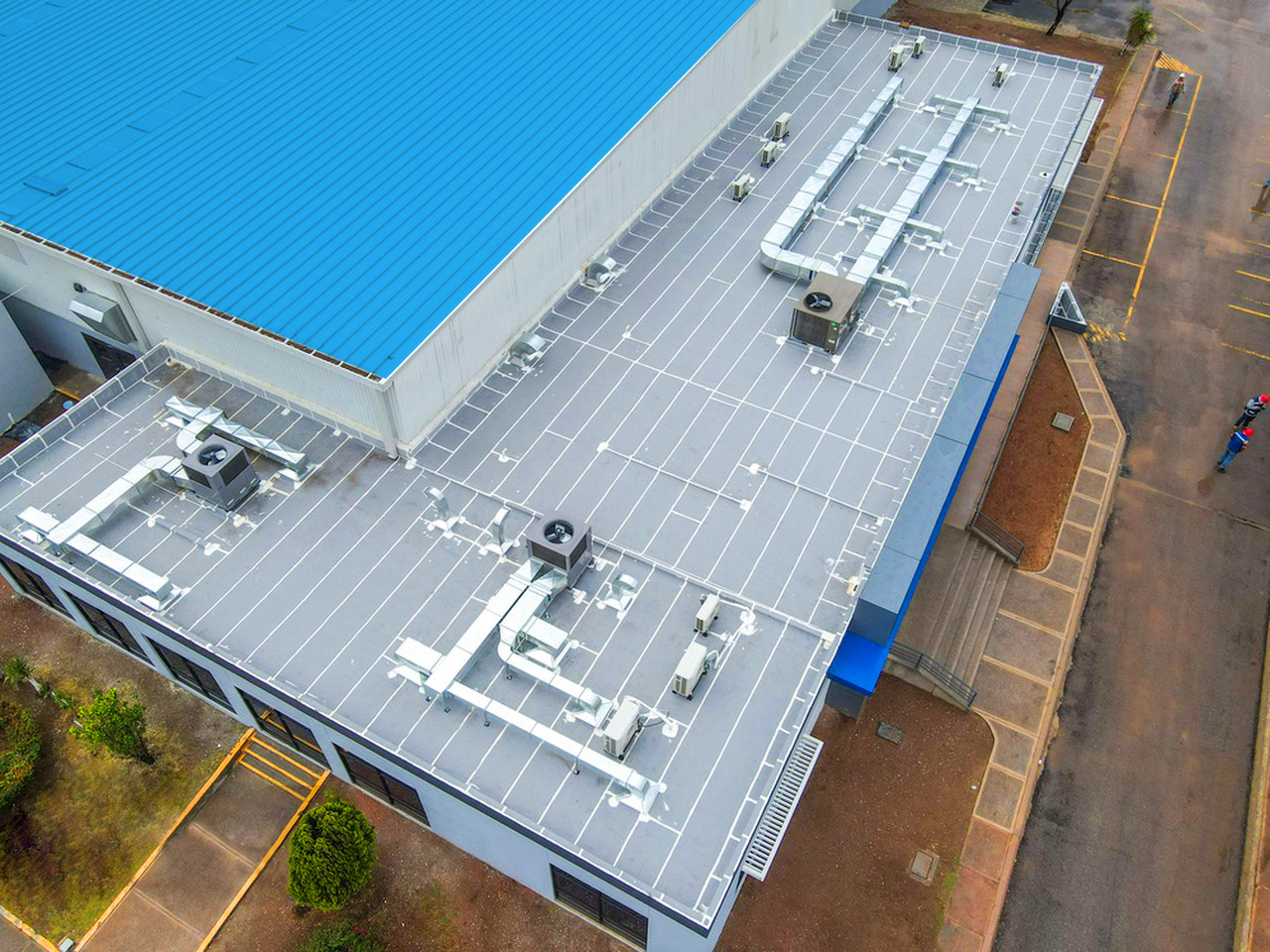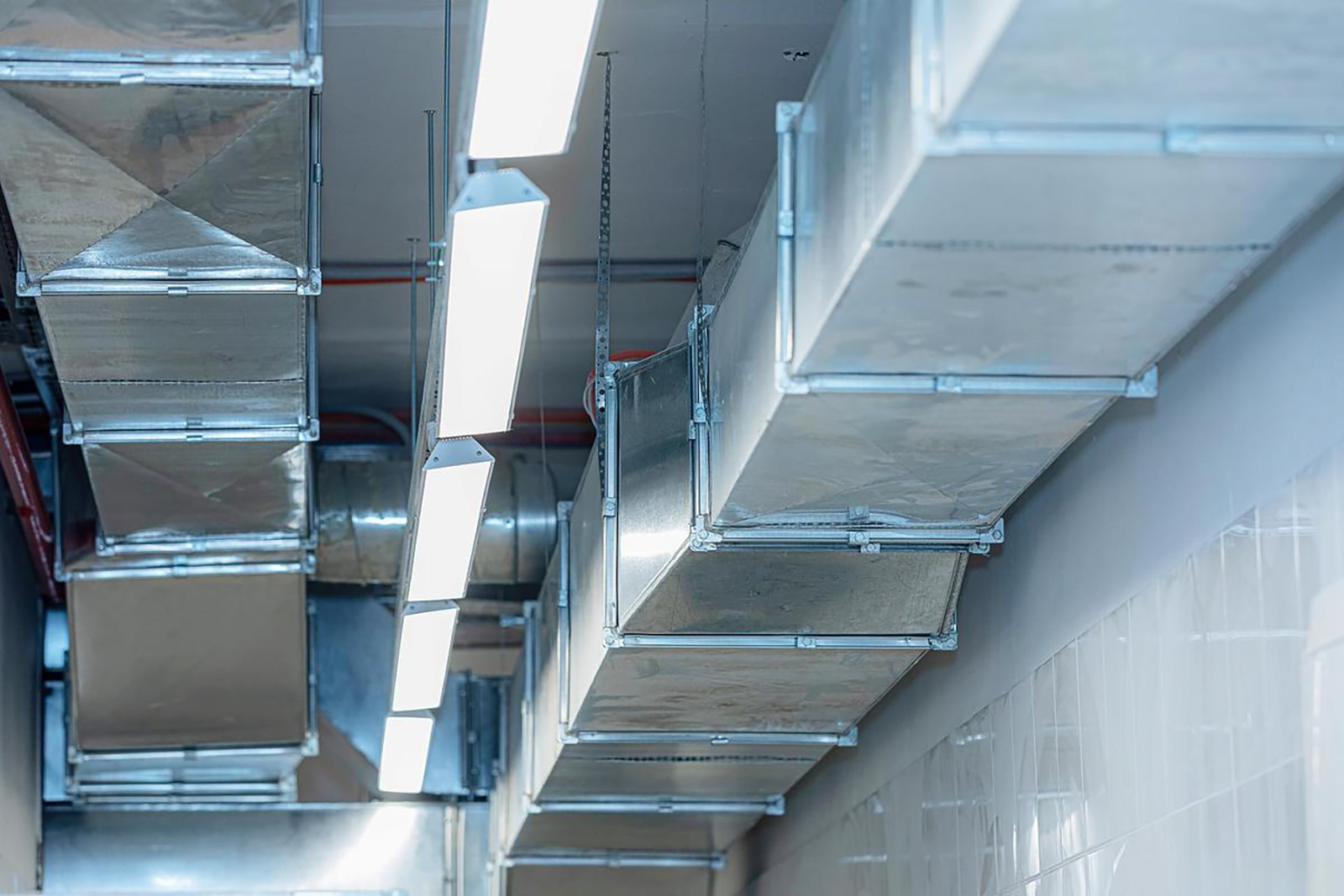


Galvanized steel plates are widely used in ventilation systems, mainly due to their corrosion resistance, high strength, and ease of processing, making them suitable for various environments and needs. The following are its specific applications and characteristics:
Air conditioning system: The main and branch ducts used to transport cold/hot air, with a galvanized layer to prevent condensation corrosion.
Exhaust system: Exhaust ducts in corrosive environments such as kitchens and laboratories, resistant to oil fumes and chemical gases.
Smoke exhaust system: Fire exhaust pipes must meet fire resistance requirements, and galvanized steel plates are often used in combination with fire-resistant wrapping layers.
Industrial ventilation: In environments with high levels of dust such as factories and workshops, galvanized steel plates are wear-resistant and have a long service life.

Flanges and connectors: Flanges formed by stamping galvanized steel plates ensure the sealing of air ducts.
Muffler and air outlet: Some muffler shells and louver air outlets are made of galvanized steel plates for rust prevention.
Brackets and lifting components: The angle steel and suspension rods that support the air ducts are often galvanized to prevent rusting and detachment.
Corrosion resistance: The zinc layer protects the substrate and extends its service life (up to 10-15 years in normal environments).
Cost effectiveness: priced lower than stainless steel, suitable for projects with limited budgets.
Convenient processing: easy to cut, bend, and rivet, suitable for on-site production of complex shaped air ducts.
Fireproof performance: Non combustible material (Class A), in compliance with fire safety regulations.
Lightweight: Compared to concrete air ducts, it reduces building loads.
Low pressure air duct: 0.5~1.2mm (such as residential air conditioning).
Medium and high pressure air ducts: 1.2-2.0mm (such as commercial complexes and industrial systems).
Smoke exhaust duct: It needs to be thickened or reinforced according to the Technical Standard for Building Smoke and Exhaust Systems (GB51251).
General requirement: Z60 (zinc layer weight ≥ 60g/m ²), Z80 or higher is required for humid environments.
International standards: ASTM A653 (American standard), EN 10346 (European standard), etc.
Cutting protection: The incision needs to be coated with special anti rust paint or zinc welding to repair the exposed iron part, to prevent rust from spreading.
Connection process: Bite connection (low pressure), flange bolt (high pressure), welding is prohibited (damaging the zinc layer).
Cleaning and maintenance: Regularly remove accumulated dust to avoid long-term attachment of damp debris.
Special environmental treatment: It is recommended to use stainless steel or add anti-corrosion coating for high humidity and acid-base environments.
Use with caution in chloride ion environments: Near coastal areas or chemical plants, the zinc layer may accelerate corrosion and needs to be evaluated or replaced with other materials.
Aesthetic requirements: If bare decoration is needed, the surface of galvanized sheet needs to be sprayed.
Galvanized steel sheet is an economical and practical choice for ventilation systems, balancing performance and cost. When designing, it is necessary to select materials based on environmental corrosiveness, wind pressure, fire rating and other parameters, and strictly follow the specifications for construction to ensure the durability and safety of the system.
 English
English